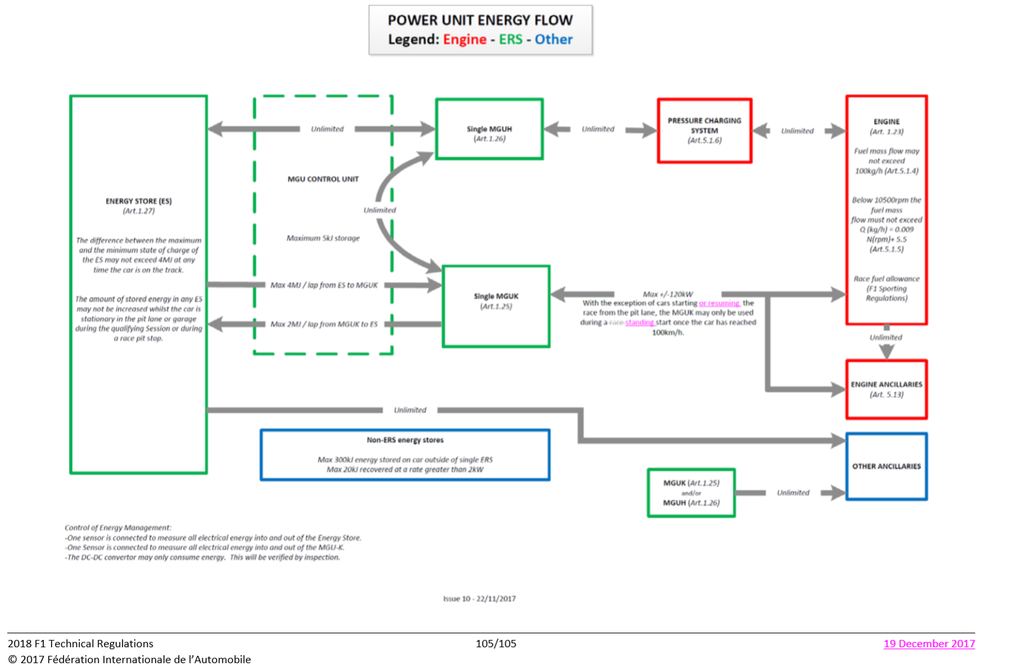I'm interested in a technical discussion on using the "unlimited" paths in the Power Unit Energy Flow diagram in the current F1 technical regs to increase the amount of per-lap energy available for transfer between the ES and MGU-K.
Obviously the direct path between ES and MGUK is limited to 4 and 2MJ per lap, however, there appears to be the possibility of adding to the amount of energy available by transferring energy via intermediate components. In the case of the MGU-H pathways, the energy is unlimited.
The MGUH is permitted to flow unlimited energy between it and the ES and also unlimited energy between it and the MGUK. If the MGU-H can be used as an energy transfer device, it appears permissible to make a path between the ES and MGU-K (by shuffling power via the MGU-H)
To my mind, there are (at least) 3 ways of using the MGU-H as an energy transfer device:
1: Treat the MGU-H as a black box with seperate electrical inputs and output. Internally connect the 2 wires, perhaps selectively. Without regulation of the internal power flow within the MGU-H, there seems little to prevent a simple diversion of power from electrical input to electrical output
2: Use the MGU-H as a kinetic converter of energy. Drive the MGU-H in electric supercharger mode by using energy from the ES to accelerate the turbine, then switching to generator mode and direct the recovered electrical energy to the MGU-K. I believe Honda use this mode
3: Use the MGU-H as a magnetic converter of energy. In much the same way as a dc-dc converter, power the windings within the MGU-H to create a magnetic field, then collapse the field to generate electricity. As an electrical engineer, this would be my prefered method - essentially the MGU-H becomes a very large flyback converter; of which efficiencies are typically high
- Login or Register
No account yet? Sign up

